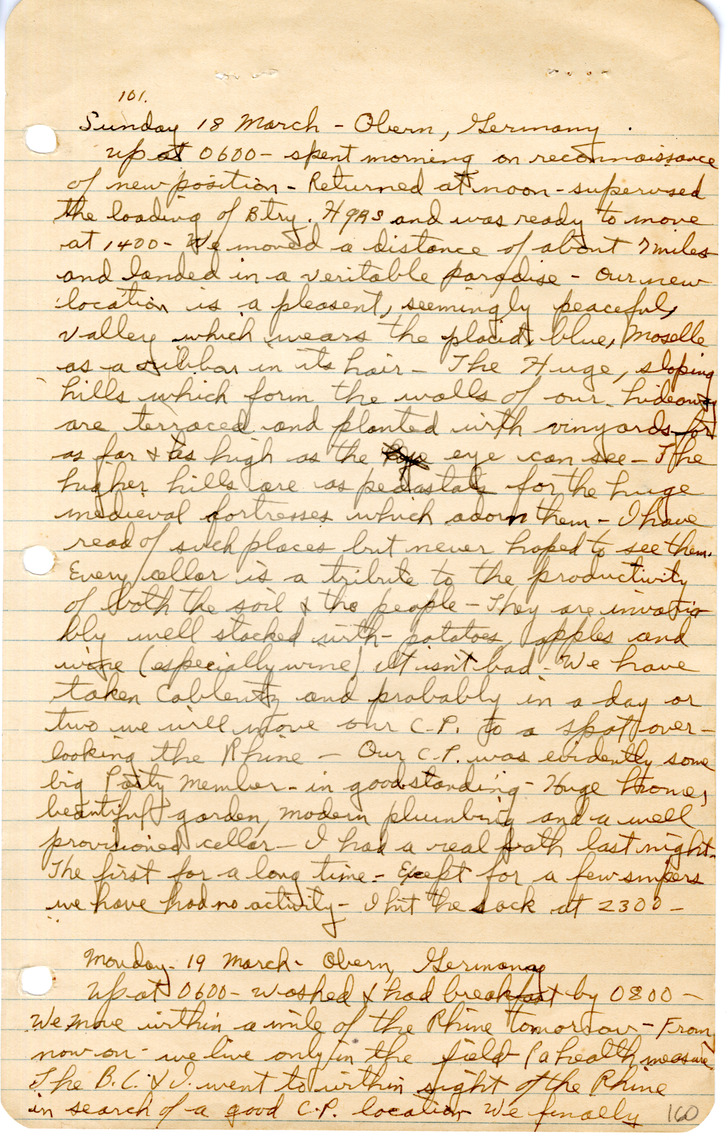Sunday, 18 March [1945] Obern, Germany
Up at 0600, spent morning on reconnaissance of new position. Returned at noon, supervised the loading of Btry HQRS and was ready to move at 1400. We moved a distance of about 7 miles and landed in a veritable paradise. Our new location is a pleasant, seemingly peaceful, valley which wears the placid, blue, Moselle as a ribbon in its hair.1 For the location of Obern, Germany, see Map, Site #22. The Huge, sloping hills which form the walls of our hideaway are terraced and planted with vineyards for as far and as high as the eye can see. The higher hills are as pedestals for the huge medieval fortresses which adorn them. I have read of such places but never hoped to see them. Every cellar is a tribute to the productivity of both the soil and the people. They are invariably well stocked with potatoes, apples and wine (especially wine). It isn’t bad. We have taken Coblentz and probably in a day or two we will move our C.P. to a spot overlooking the Rhine. Our C.P. was evidently some big Party Member in good standing. Huge homes, beautiful garden, modern plumbing and a well provisioned cellar. I had a real bath last night. The first for a long time. Except for a few snipers we have had no activity. I hit the sack at 2300.
Monday, 19 March [1945] Obern, Germany
Up at 0600. Washed and had breakfast by 0800. We move within a mile of the Rhine tomorrow. From now on we live only in the field. (A health measure). The B.C. and I went to within sight of the Rhine in search of a good C.P. location. We formally [continued on next page]


